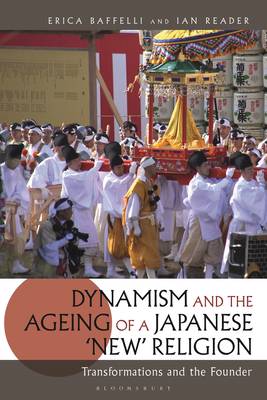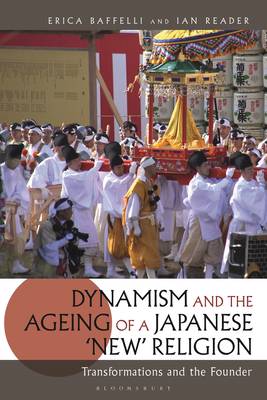
Je cadeautjes zeker op tijd in huis hebben voor de feestdagen? Kom langs in onze winkels en vind het perfecte geschenk!
- Afhalen na 1 uur in een winkel met voorraad
- Gratis thuislevering in België vanaf € 30
- Ruim aanbod met 7 miljoen producten
Je cadeautjes zeker op tijd in huis hebben voor de feestdagen? Kom langs in onze winkels en vind het perfecte geschenk!
- Afhalen na 1 uur in een winkel met voorraad
- Gratis thuislevering in België vanaf € 30
- Ruim aanbod met 7 miljoen producten
Zoeken
Dynamism and the Ageing of a Japanese 'New' Religion
Transformations and the Founder
Erica Baffelli, Ian Reader
Paperback | Engels
€ 76,45
+ 152 punten
Uitvoering
Omschrijving
This book examines the trajectory and development of the Japanese religious movement Agonshu and its charismatic founder Kiriyama Seiyu. Based on field research spanning 30 years, it examines Agonshu from when it first captured attention in the 1980s with its spectacular rituals and use of media technologies, through its period of stagnation to its response to the death of its founder in 2016.
The authors discuss the significance of charismatic leadership, the 'democratisation' of practice and the demands made by movements such as Agonshu on members, while examining how the movement became increasingly focused on revisionist nationalism and issues of Japanese identity. In examining the dilemma that religions commonly face on the deaths of charismatic founders, Erica Baffelli and Ian Reader look at Agonshu's response to Kiriyama's death, looking at how and why it has transformed a human founder into a figure of worship.
By examining Agonshu in the wider context, the authors critically examine the concept of 'new religions'. They draw attention to the importance of understanding the trajectories of 'new' religions and how they can become 'old' even within their first generation.
The authors discuss the significance of charismatic leadership, the 'democratisation' of practice and the demands made by movements such as Agonshu on members, while examining how the movement became increasingly focused on revisionist nationalism and issues of Japanese identity. In examining the dilemma that religions commonly face on the deaths of charismatic founders, Erica Baffelli and Ian Reader look at Agonshu's response to Kiriyama's death, looking at how and why it has transformed a human founder into a figure of worship.
By examining Agonshu in the wider context, the authors critically examine the concept of 'new religions'. They draw attention to the importance of understanding the trajectories of 'new' religions and how they can become 'old' even within their first generation.
Specificaties
Betrokkenen
- Auteur(s):
- Uitgeverij:
Inhoud
- Aantal bladzijden:
- 216
- Taal:
- Engels
Eigenschappen
- Productcode (EAN):
- 9781350170148
- Verschijningsdatum:
- 25/06/2020
- Uitvoering:
- Paperback
- Formaat:
- Trade paperback (VS)
- Afmetingen:
- 156 mm x 234 mm
- Gewicht:
- 303 g

Alleen bij Standaard Boekhandel
+ 152 punten op je klantenkaart van Standaard Boekhandel
Beoordelingen
We publiceren alleen reviews die voldoen aan de voorwaarden voor reviews. Bekijk onze voorwaarden voor reviews.









